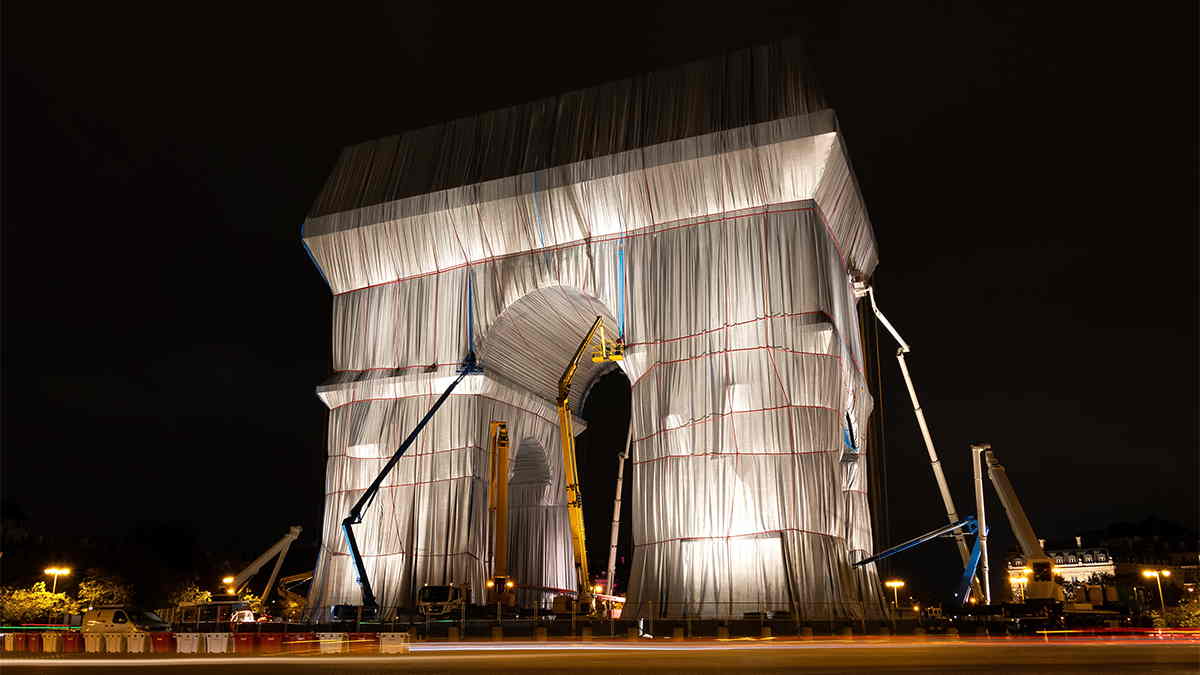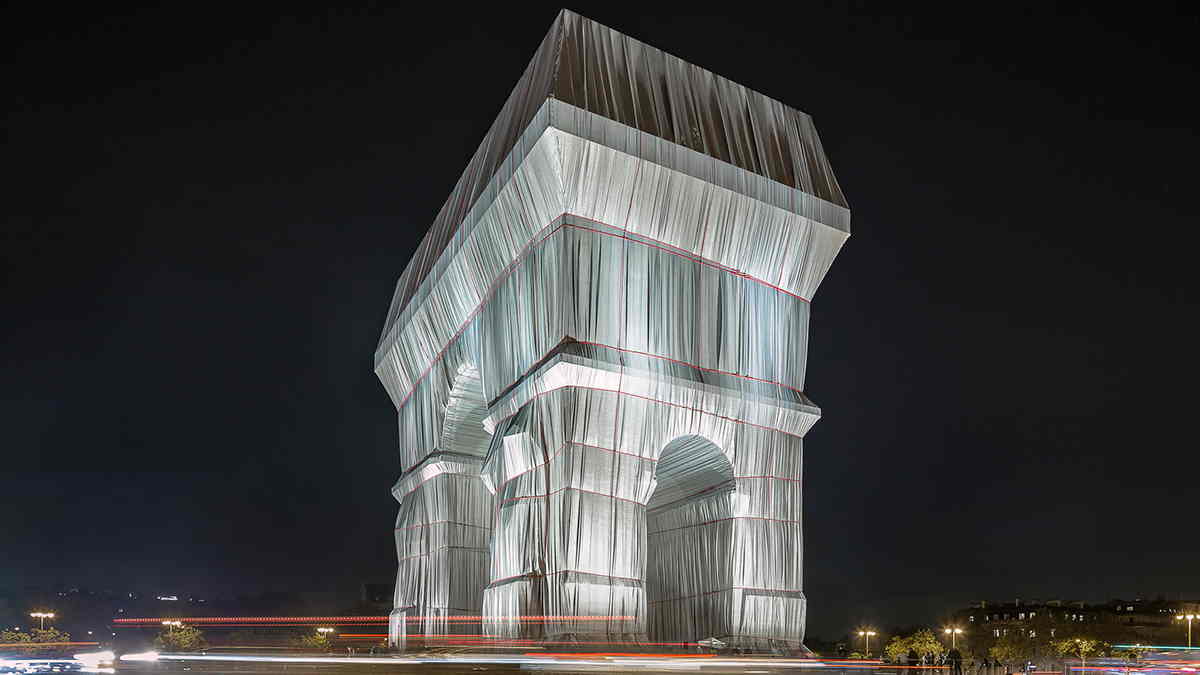Born in 1935, the ‘Master of Wrapping’ Christo Vladimirov Javacheff’s mammoth project for the Arc de Triomphe, one of the famous buildings of Paris, was carried out by his nephew Vladimir Yavachev after Christo’s death in May 2020. Yavachev completed his uncle’s final artwork according to Christo’s original plans. Covered with 25,000 square metres of silver-blue recycled polypropylene fabric and 3,000 metres of red rope, produced by SETEX, the German customer of Lindauer DORNIER GmbH; L’Arc de Triomphe presented to the attention of art lovers from September 18 to October 3, 2021. Those who did not have the opportunity to go to Paris could watch Christo’s latest artwork live on the artist’s website.
The production of the project-specific fabric took one year
In 1961, three years after meeting in Paris, the couple Christo and Jeanne-Claude began creating works of art in public spaces. Christo made a photomontage of the Arc de Triomphe wrapped, seen from Avenue Foch in 1962 and a collage in 1988. After 60 years, the project was finally realized, and the 50-metre-high Arc de Triomphe, comissioned by Napoleon in 1806 in honour of his victories and completed in 1836, has become one of Christo’s world-famous wrapping artworks. While the coated fabric used in the work is provided by SETEX Textil, the traditional weaving mill in Greven, Germany; It took one year to produce this fabric especially for this work of art on a DORNIER P2 rapier weaving machine.
Konrad Schröer, owner and Managing Director of the North Rhine-Westphalia family business, said that only one weaving machine came into question for this demanding fabric; “The ideal solution is the P2 with its new shed geometry and increased performance in combination with our experienced weavers and their textile know-how”. SETEX also manufactures on the P2 fabrics of the highest quality made of glass, polyester and polypropylene fibres, used as coating carriers as well as for filtration.

Lindauer DORNIER technologies were also used in Christo’s earlier works
Lindau technology at Lake Constance has also played a role in the earlier works of Christo, who has always chosen his ‘wrapping materials’ very carefully. The polypropylene fabric covering the Reichstag in Berlin in 1995 and the material for the artist’s project ‘The Gates’ in Manhattan, Central Park were also produced on DORNIER’s rapier weaving machines.
While the technical properties of the textiles used for these art performances are of great importance. In addition to adequate resistance to wind loads, artistic criteria such as light reflection or draping of the fabric stand out as important factors in this sense. For this reason, the fabric developed for this purpose has an optimized texture in terms of lightness and stability, and its economic and recycling aspects also play an effective role. It is also important that the fabric is cost-effective since all of Christo’s projects are carried out without public funding.

